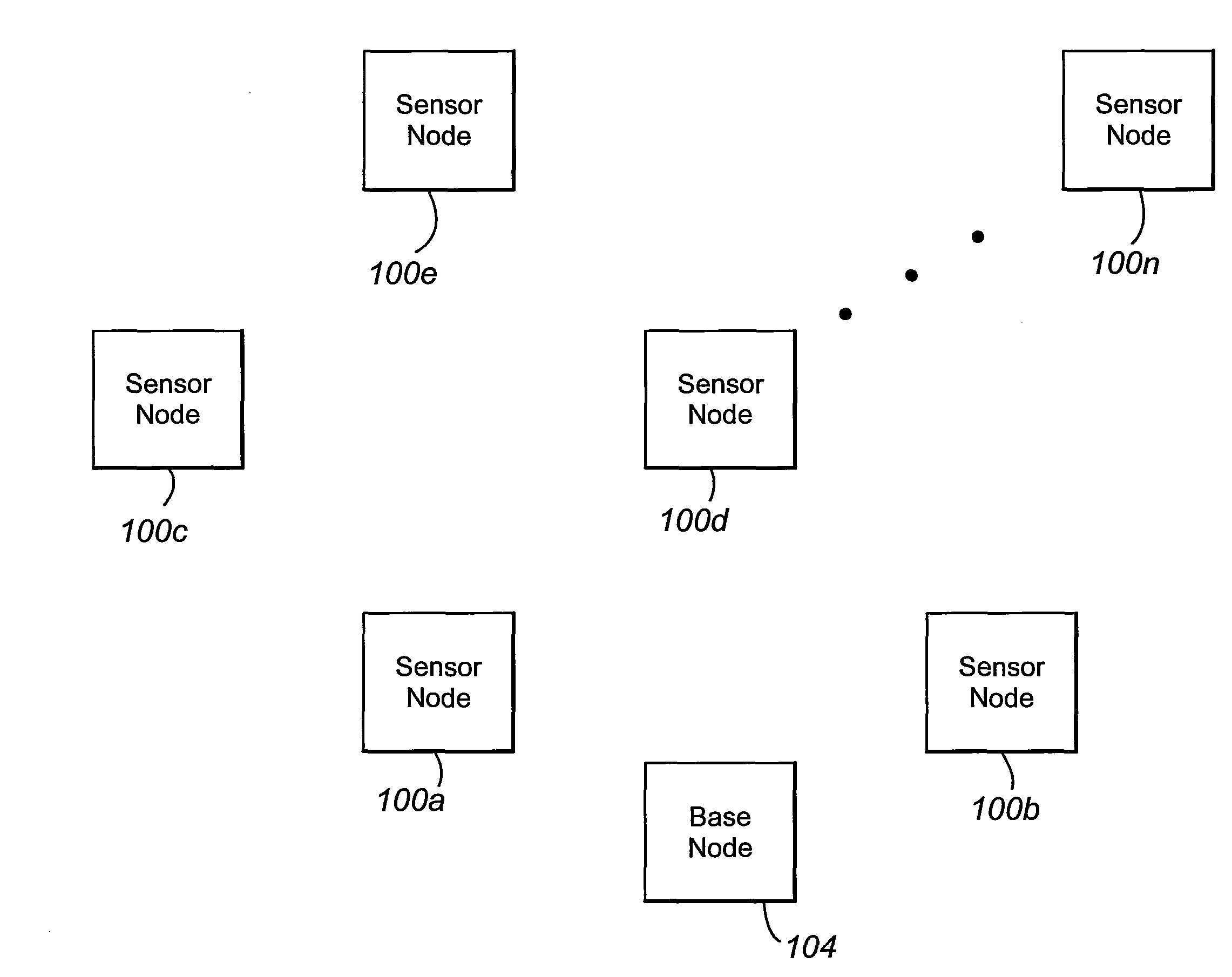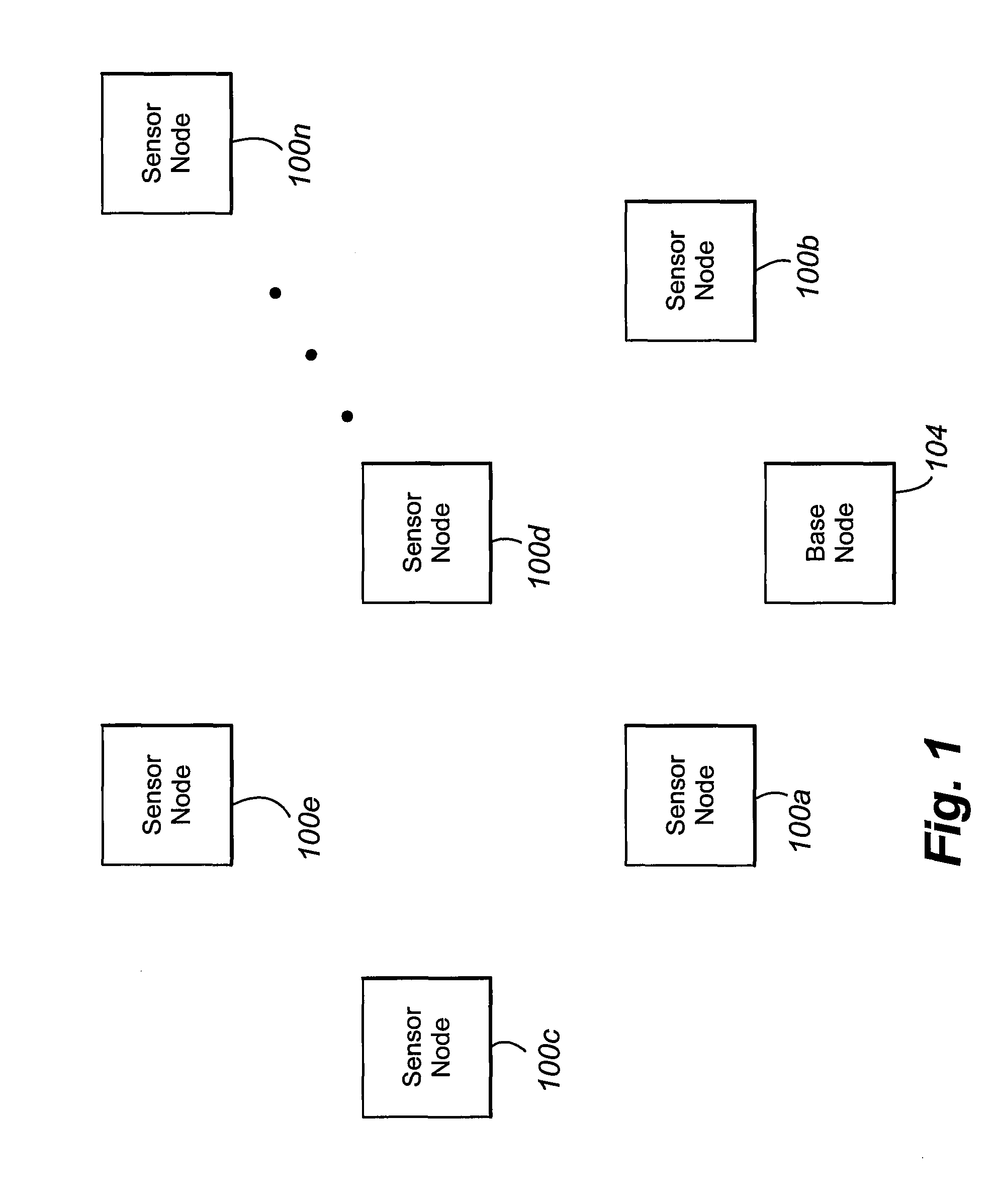Long range, low power, mesh networking without concurrent timing
a technology of mesh networking and long range, applied in the field of distributed networks, can solve the problems of limited application of state-of-the-art ugs systems, lack of commercially available low-power mesh networking solution for radios with multi-mile communications range, and may be under surveillance, so as to prolong the life of sensor nodes, reduce power consumption, and reduce deployment constraints
- Summary
- Abstract
- Description
- Claims
- Application Information
AI Technical Summary
Benefits of technology
Problems solved by technology
Method used
Image
Examples
Embodiment Construction
[0046]An embodiment of a network architecture according to a first embodiment will be discussed with reference to FIGS. 1-4. The network includes a number of spatially dislocated sensor nodes 100a-n in wireless communication with one another and with a base (gateway-equipped) node 104. The various sensor nodes 100a-n are grouped into families, each family including spatially proximal sets of nodes. For example, sensor node 100a is a parent to nodes 100c and 100d and a grandparent to node 100e. Node 100e is a child of node 100d, or, stated another way, node 100d is a parent of node 100e. As discussed below, the family groupings are used in routing messages through the network.
[0047]In one configuration, each node 100a-n includes a radio 200, a sensor module 204, a database 208, a mesh interface card 212, an internal power source 216, and a sensor node controller 220. The nodes can, of course, include more or fewer or different components depending on the appli...
PUM
 Login to View More
Login to View More Abstract
Description
Claims
Application Information
 Login to View More
Login to View More - R&D
- Intellectual Property
- Life Sciences
- Materials
- Tech Scout
- Unparalleled Data Quality
- Higher Quality Content
- 60% Fewer Hallucinations
Browse by: Latest US Patents, China's latest patents, Technical Efficacy Thesaurus, Application Domain, Technology Topic, Popular Technical Reports.
© 2025 PatSnap. All rights reserved.Legal|Privacy policy|Modern Slavery Act Transparency Statement|Sitemap|About US| Contact US: help@patsnap.com



